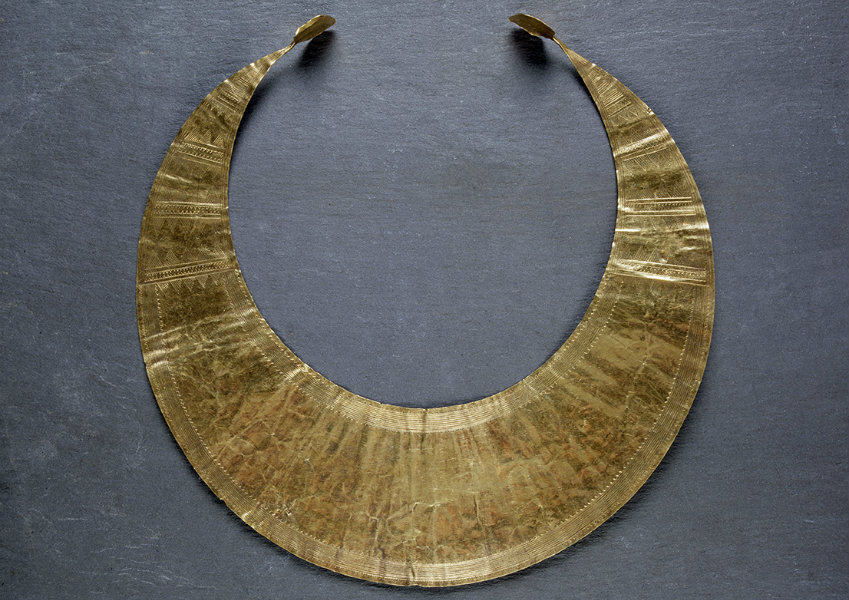Ancient trade route shows gold's enduring power
Loading...
A new study has shed more light on how the value of gold has endured – and changed – since ancient times.
Archeologists at the University of Southampton in the United Kingdom have discovered a prehistoric gold trade route between Ireland and southwest England that dates as far back as the Bronze Age, or about 2500 B.C. The route’s existence implies that gold workers in Ireland chose to import the metal from Cornwall despite likely knowing how to extract the material from local deposits – suggesting variations in how the two cultures regarded gold, according to Dr. Chris Standish, the study’s lead author.
“This implies gold was leaving the region [of Cornwall] because those who found it felt it was of more value to trade it in for other ‘desirable’ goods – rather than keep it,” he said in a press statement. In Ireland, on the other hand, it was “probable that an ‘exotic’ origin was cherished as a key property of gold and was an important reason behind why it was imported for production,” Dr. Standish noted.
The findings support the idea that gold’s value in ancient times was more closely tied to belief systems than to outright economic value, the way it is today.
After all, it wasn’t until 1500 B.C. that gold became a standard medium of exchange for international trade. It was another millennium before King Croesus of Lydia ordered the minting of the first gold coins.
The ancient Egyptians, for instance, believed gold held spiritual powers associated with the sun, leading them to bury their dead surrounded by golden jewelry and other items. In pre-colonial South America, gold was also regarded as a symbol of rank and divine status: The Incas believed gold was “the sweat of the sun,” while ancient Colombians used powdered gold to cover the skin of a monarch — a practice that may have led to the legends of El Dorado.
Similar beliefs may have driven the inhabitants of ancient Ireland to international trade, the University of Southampton study suggests:
Materials originating from distant, unfamiliar, or mythical lands, those located outside the immediate world-view or cosmos of a society, could be charged with mystical and/or supernatural powers. [And] people involved in acquiring these mythically-charged materials, transforming them into artifact form, or controlling their deployment, were inherently linked with … the associated powers.
“The results … show that there was no universal value of gold, at least until perhaps the first gold coins started to appear nearly two thousand years later,” said Dr. Alistair Pike, a co-author of the study. “Prehistoric economies were driven by factors more complex than the trade of commodities – belief systems clearly played a major role.”
In conducting their study, Dr. Pike and his colleagues used only somewhat less mystical methods.
Using gold samples from the National Museum of Ireland’s Bronze Age collection, the researchers employed an advanced technique called laser ablation mass spectrometry to test the gold for isotopes of lead. They compared the composition of these fragments to those of gold deposits from a variety of locations, and after further analysis concluded that the gold in the objects likely originates from Cornwall.








